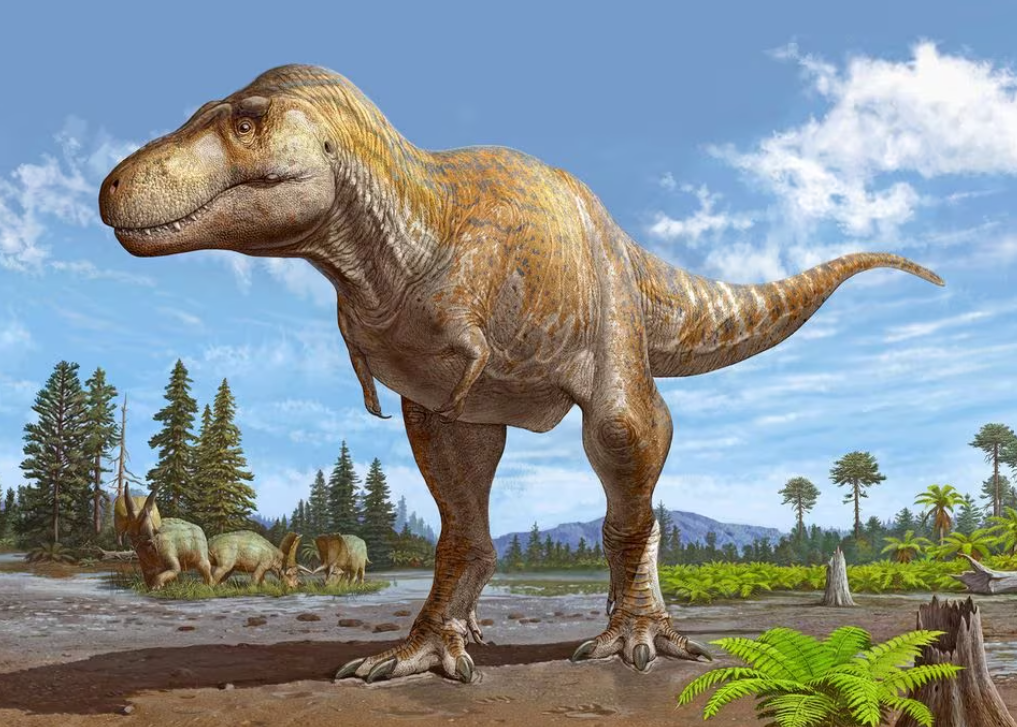
©U.S. Sergei Krasinski/Handout via Reuters
Pre-reading questions:
- What images or ideas come to your mind when you hear the term Tyrannosaurus rex?
- What do you expect to discover about this dinosaur?
Vocabulary:
- evolution /ev-uh-LOO-shuhn /
- selection /si-LEK-shuhn/
- debate /dih-BEYT/
- distinction /dih-STINGK-shuhn/
- variation /vair-ee-EY-shuhn/
[noun] – the way in which living things change and develop over millions of years
The evolution of smartphones has transformed communication in the modern era.
[noun] – the act of choosing someone or something
The selection of a candidate for the job involved a thorough interview process.
[noun] – a formal discussion of opposing viewpoints on a particular topic
The debate over climate change continues to generate intense discussions among scientists and policymakers.
[noun] – a difference between two similar things
The distinction between right and wrong is a fundamental concept in ethical discussions.
[noun] – a change or difference in condition, amount, or level
The variation in weather patterns makes it challenging to predict the exact temperature each day.
Article reading:
Paleontologist Nick Longrich from the University of Bath emphasizes the consistent differences in the various bones of T. mcraeensis compared to known T. rex specimens. Some skeptics within the scientific community attribute these distinctions to relative maturity and individual variation, adding complexity to the ongoing debate. Furthermore, disputes arise over the estimated age of the fossil, with some questioning the proposed timeline of 71–73 million years. This discovery challenges established notions, contributing to a deeper understanding of dinosaur evolution during the twilight of the prehistoric era.
Comprehension questions
- Where did researchers find the partial skull of Tyrannosaurus mcraeensis?
- What are some subtle differences between Tyrannosaurus mcraeensis and the well-known T. rex?
- Why do scientists believe the observed disparities in T. mcraeensis have implications for Tyrannosaurus evolution?
- What does the ongoing debate in the scientific community concern regarding the newly discovered dinosaur?
- How does the discovery of Tyrannosaurus mcraeensis challenge established notions about Tyrannosaurus evolution?
Discussion questions
- Have you ever visited a museum or exhibition showcasing dinosaur fossils or prehistoric artifacts? If yes, what was your experience like? If not, would you be interested in exploring such exhibits in the future?
- Have you ever participated in a debate or discussion where different opinions clashed? If yes, how did you navigate through the differing perspectives? If not, can you imagine how you would approach a situation with conflicting viewpoints?
- Did the discovery of Tyrannosaurus mcraeensis challenge the existing notions about the timeline and geographic distribution of Tyrannosaurus species?
- Why do you think the article mentions disputes over the estimated age of the fossil, and how might this uncertainty impact our understanding of dinosaur evolution?
- How might the ongoing debate among scientists regarding the observed differences in Tyrannosaurus mcraeensis contribute to the advancement of our understanding of dinosaur evolution?